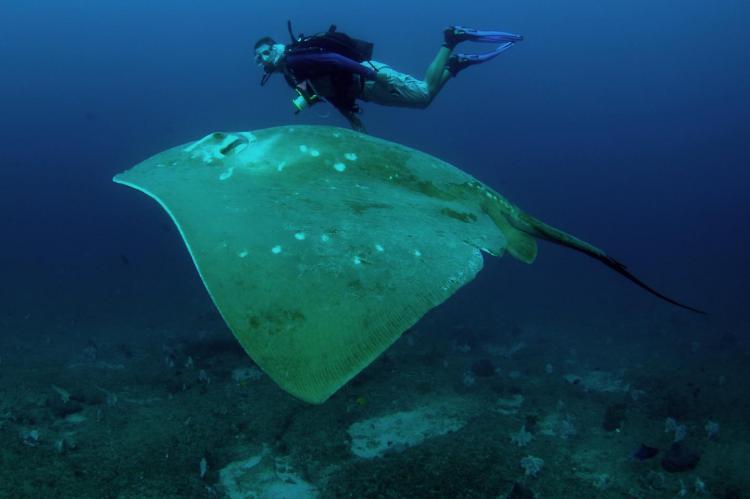World's largest stingray travels far
Using images and videos submitted by divers for the first study of the world’s largest stingray, the smalleye stingray (Megatrygon microps), which can grow up to 222cm in width, researchers found that the species travels hundreds of kilometers during migration along the coast of Africa.
One pregnant female was recorded to have traveled 200km from Tofo to Bazaruto Archipelago and back—a total round-trip of 400km.
Researchers from the Marine Megafauna Foundation, whose findings were published in the journal PeerJ, studied these elusive animals in southern Mozambique, which is one of the only places on earth where they can be regularly observed in the wild on inshore reefs. The scientists used photo identification for the first time to track the species’ behaviors and movements.
“We reported the first sightings of smalleye stingray in 2004 and have since been racing against the clock to learn more about their ecology before it is too late,” co-founder and principal scientist of the Marine Megafauna Foundation, Dr Andrea Marshall, said. According to the IUCN Red List of Threatened Species, 31 percent of the world’s sharks and rays are threatened. Marshall said, “This species of ray is likely in trouble too, but we can’t protect what we don’t know much about. Our study is an important first step in understanding more about the animal’s ecology and behavior.”
Divers contribute
Over 140 photographs of the stingrays, some dating as far back as 2003, were gathered from scuba divers who contributed images to the study. “Through local dive centers, we called on tourists to help us collect images of this solitary stingray. Fortunately for us, southern Mozambique and its rich marine life attract many passionate scuba divers, most of which own GoPros or other lightweight cameras and will happily make their images and footage available for research,” said Atlantine Boggio-Pasqua, a volunteer with the Tofo-based foundation.
With these images, marine biologists found that they were able to use the white dorsal spots on smalleye stingrays to distinguish and track individuals over extended periods of time. Seventy different individuals were identified using the dorsal spot patterns, 15 of which had been seen in the study area several times.
As smalleye stingrays are likely threatened by fishing pressures, collecting more data about them will help scientists learn more about their habitat preferences, reproduction, growth, feeding and cleaning behavior, as well as assist researchers to formally assess the species’ conservation status, providing important information for management practices.


